
Milkweeds and Monarchs
The monarch is, without hesitation, the most recognized of all butterflies in North America.
With its distinct orange, black and white coloring, it’s the American robin of the butterfly world, as neither species, both as familiar as family members to onlookers, requires thumbing through field guides for proper identification.
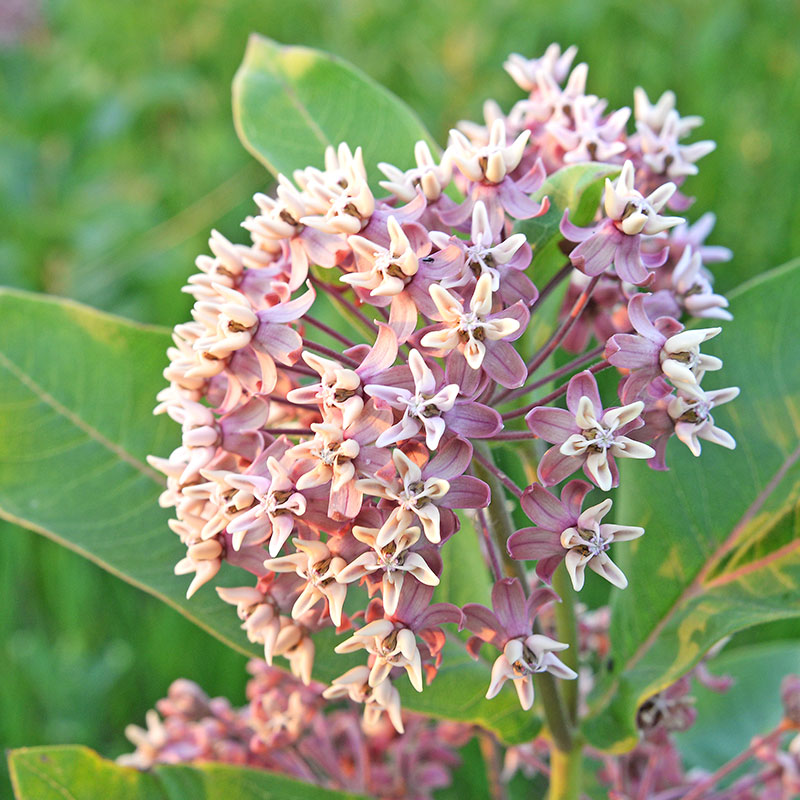
There are a number of milkweed species native to North Dakota, but two of the more familiar are common milkweed...
While the monarch may retain its butterfly-next-door identity for generations, there is real concern among scientists due to a drastic decline in the monarch population.
Greg Link, North Dakota Game and Fish Department conservation and communications chief, said the monarch butterfly population has fallen from an estimated high of almost 1 billion in 1996 to a low of 35 million in 2013. Wintering ground population estimates in Mexico in 2015-16 showed that the population rebounded some, but the concern remains.
Link said the U.S. Fish and Wildlife Service has received petitions to list the monarch, and several other pollinator species that may occur in North Dakota, under the Endangered Species Act.
The matter is currently under federal review to determine if listing the monarch is warranted. The final determination is scheduled for June 2019.
“A threatened and endangered species listing is essentially the emergency room code blue for critters and plants,” Link said. “Therefore, we want to avoid the need for a trip to the emergency room with wildlife species. We do this by taking proactive measures, monitoring life cycle vitals, and ensuring requirements are met so as to maintain a stable healthy status.”
Sandra Johnson, Game and Fish Department conservation biologist, said that while there are a number of potential reasons for the decline in monarch numbers, disease and predation to name a couple, loss of milkweed habitat on summer grounds figures near the top of the list.
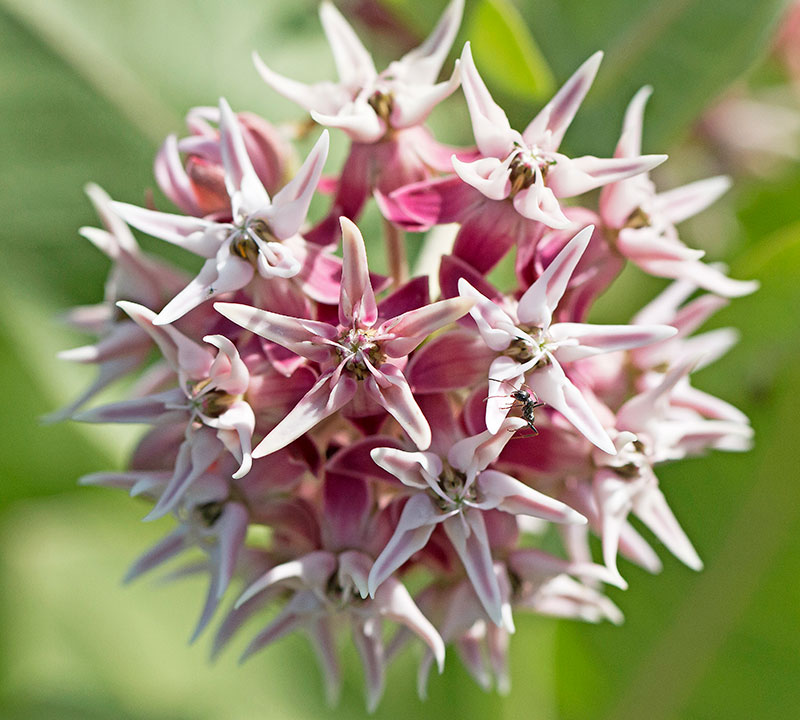
...and showy milkweed
Milkweed plants are fundamental in the survival of the species. “Without milkweed, there are no more monarchs,” Johnson said.
There are roughly 10 species of milkweed in North Dakota, all of which are native. The two that are most familiar are common milkweed and showy milkweed.
After mating, the female monarch lays eggs on milkweed plants, typically one egg per plant. Once hatched, monarch larvae feed exclusively on the plant.
“The young depend on the milkweed, primarily the leaves, as a food source,” Johnson said. “They eat constantly. They eat and grow, eat and grow...just devouring the plant.”
Scientists tell us that a female monarch will lay several hundred eggs. Eggs hatch in about four days and the larvae go through five stages as they grow for 10-14 days. The larvae then transform into a chrysalis and the tissues reorganize into a butterfly. After 10-14 days, the adult monarch emerges.
“Unless you’ve witnessed the life cycle of a monarch butterfly firsthand, it’s really hard to appreciate all of what happens,” Johnson said.
Adult monarchs aren’t dependent on milkweed, but rather feed on a variety of nectar producing plants found in the wild and in backyard gardens.
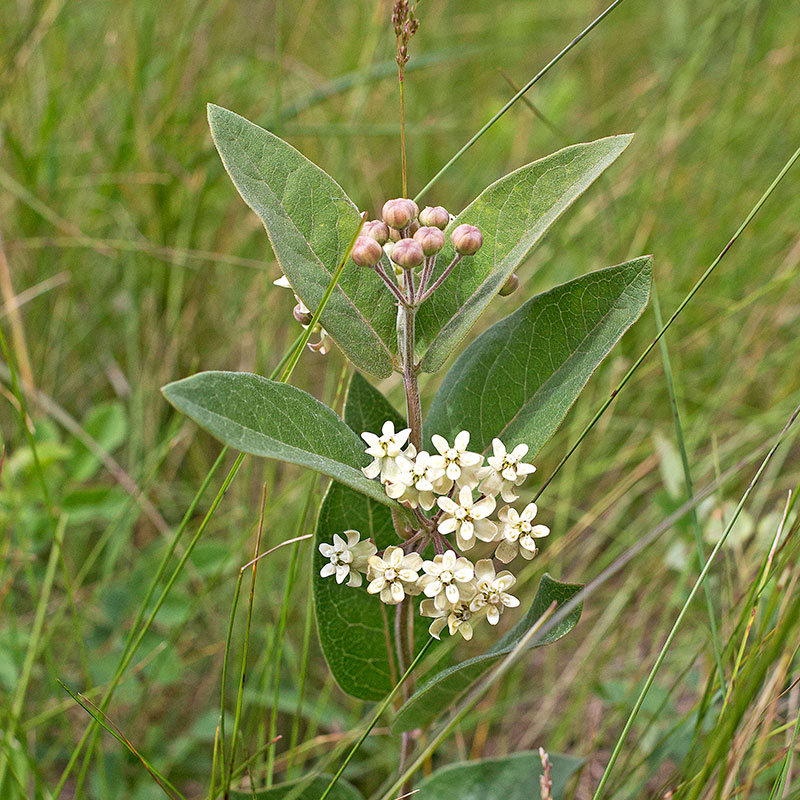
Oval-leaf milkweed is not as common in the state, but found in prairies, along riverbanks, in open woods and roadside ditches.
Johnson said the milkweed likely gets a bad rap because of its name, and common milkweed can be aggressive and take over chunks of land.
Yet, more and more of these plants are lost with the disappearance of many acres of CRP and native prairie. Milkweed is also common in roadside ditches and on farm land, where chemical spraying is often initiated to kill the plants.
Link said state and federal agencies and conservation organizations are working together to determine the monarch’s specific habitat requirements – milkweed patch size, distribution, stem count and so on – and develop the conservation measures necessary to curb population declines, as well as assess and properly address threats.
“State and federal partners are banding together and pooling resources to develop and implement monitoring efforts to more accurately assess and determine how monarch population and distribution trends are doing,” Link said. “Hopefully, these efforts bear fruit in turning monarch population trends in an upward direction, and thereby prevent listing.”
North Dakota and other states are charged with development of monarch management plans and strategies to further conservation of monarch butterflies and other pollinators.
The North Dakota Monarch and Native Pollinator Strategy outlines actions to increase the monarch population in its summer range and further pollinator conservation in the state.
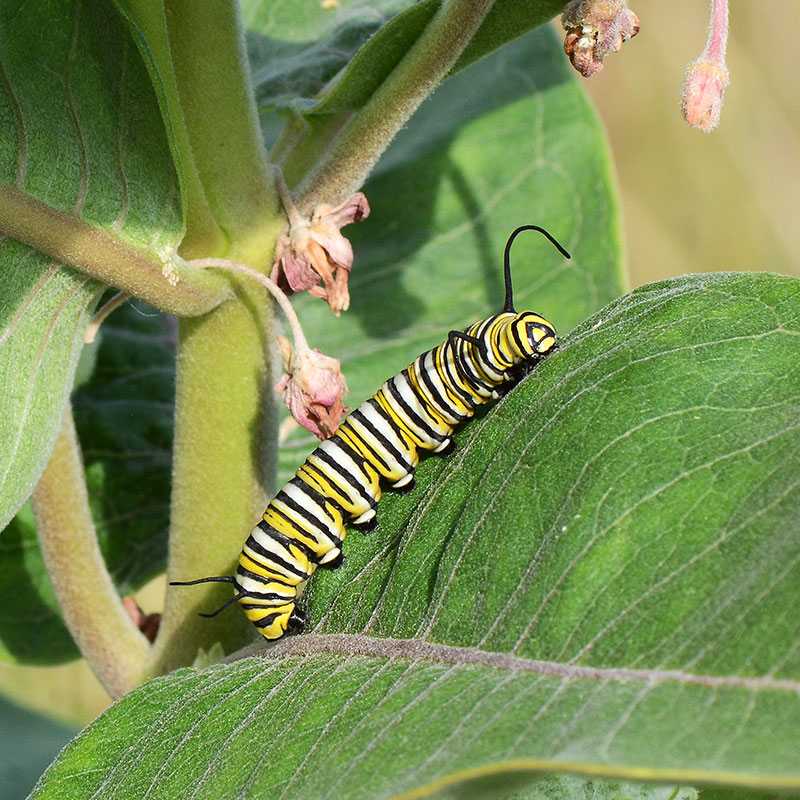
The monarch caterpillar is nearly as recognizable as the adult monarch. At the right time of year, if you were to search this milkweed patch, you’d likely find caterpillars feasting on the plants.
Johnson, who helped author much of North Dakota’s plan, said its intent is to preclude the need to list the monarch and other pollinators as threatened or endangered under the Endangered Species Act. The strategy will reveal conservation actions, activities or programs in development or currently in effect that will reduce threats, or otherwise improve the status of the monarch and other pollinators in North Dakota.
“While North Dakota may not be as important as summer habitat to monarch butterflies as some other states, we are a player in the conservation effort,” Johnson said. “Much of the country, mostly Central Flyway and Corn Belt states, are working together, North Dakota included, to develop this long-term plan of adding and conserving habitat to keep monarchs off the list.”
Wildlife managers understand that listing a species as federally threatened or endangered may restrict certain actions on private and public lands. The cost of protection or restoration of a listed species is often far greater than preventing or stemming the decline in the first place.
“No one wants the monarch butterfly on the Endangered Species List because of the restrictions that comes with managing public and private land,” Johnson said. “And no one wants it going extinct in 20 years.”
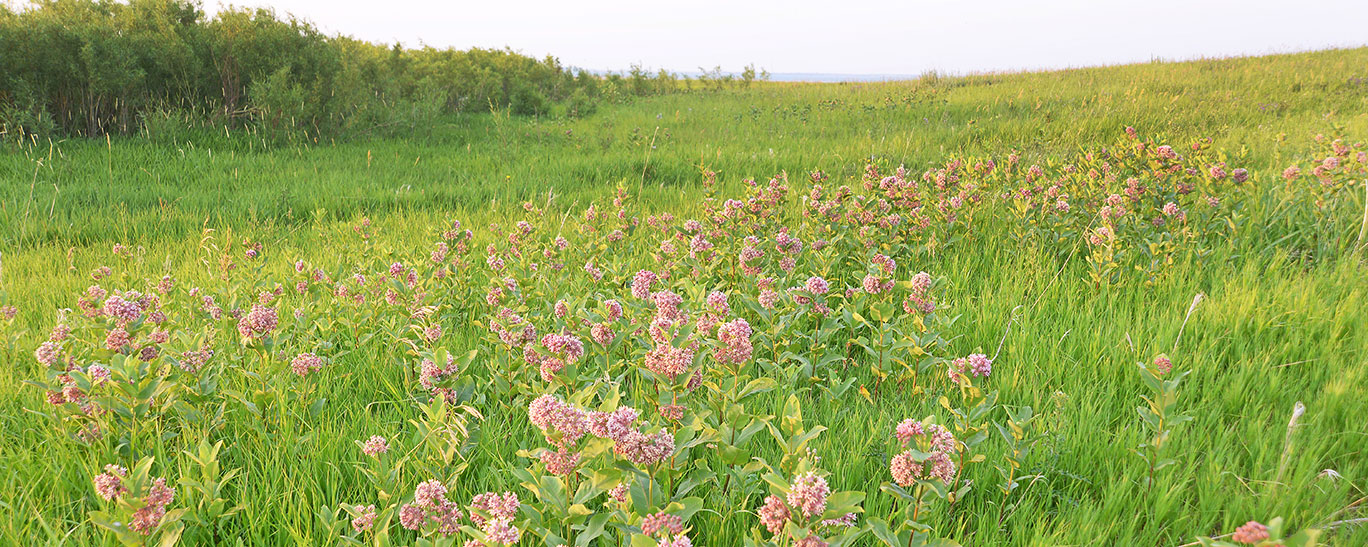
Updated Lists
What follows are current lists of North Dakota threatened and endangered species and recently petitioned species.
Federally listed species:
- Birds – Whooping crane (endangered); least tern (endangered); piping plover (threatened); and rufa red knot (threatened).
- Mammals – Black-footed ferret (endangered); Northern long-eared bat (threatened); and gray wolf (endangered).
- Fish – Pallid sturgeon (endangered).
- Insects – Dakota skipper (threatened); Poweshiek skipperling (endangered); and rusty patched bumble bee (endangered).
- Plant – Western prairie fringed orchid (threatened).
- Recently petitioned species:
- Insects – Monarch butterfly; regal fritillary; Western bumble bee; and yellow-banded bumble bee.
- Mammals – Prairie gray fox; plains spotted skunk; and moose.
- Fish – Sturgeon chub and sicklefin chub.
(For more information on these species see the Department Threatened and Endangered Species page.)
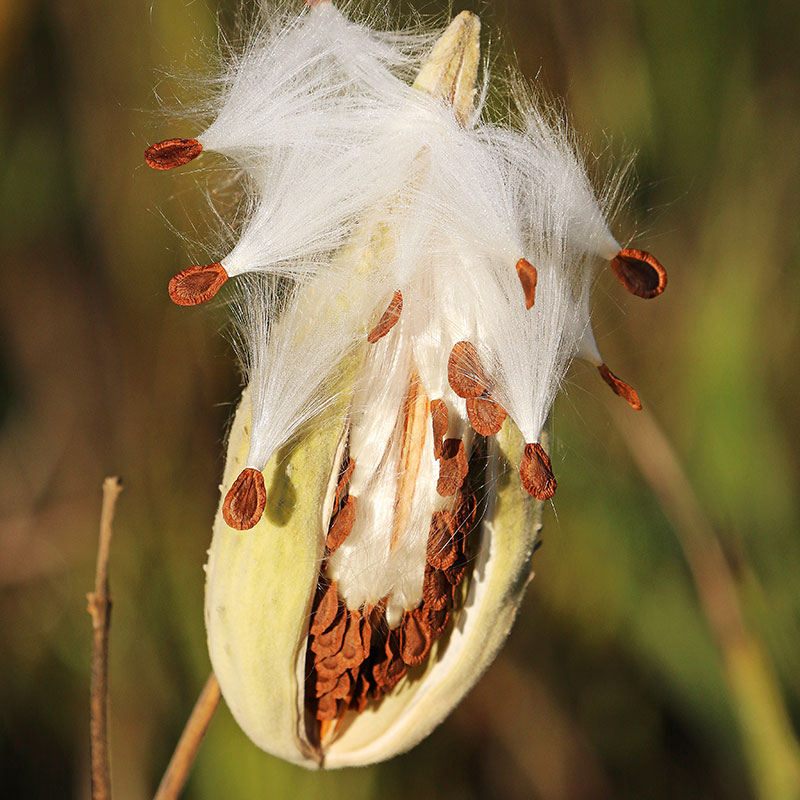
A milkweed giving up its seeds in fall.
Monarch Habitat Survey
The North Dakota Game and Fish Department would like to know what projects, big or small, individuals, groups or conservation organizations may be executing to assist in the long-term effort to provide milkweed habitat for the propagation of monarch butterflies. Please complete a brief survey (closed).
